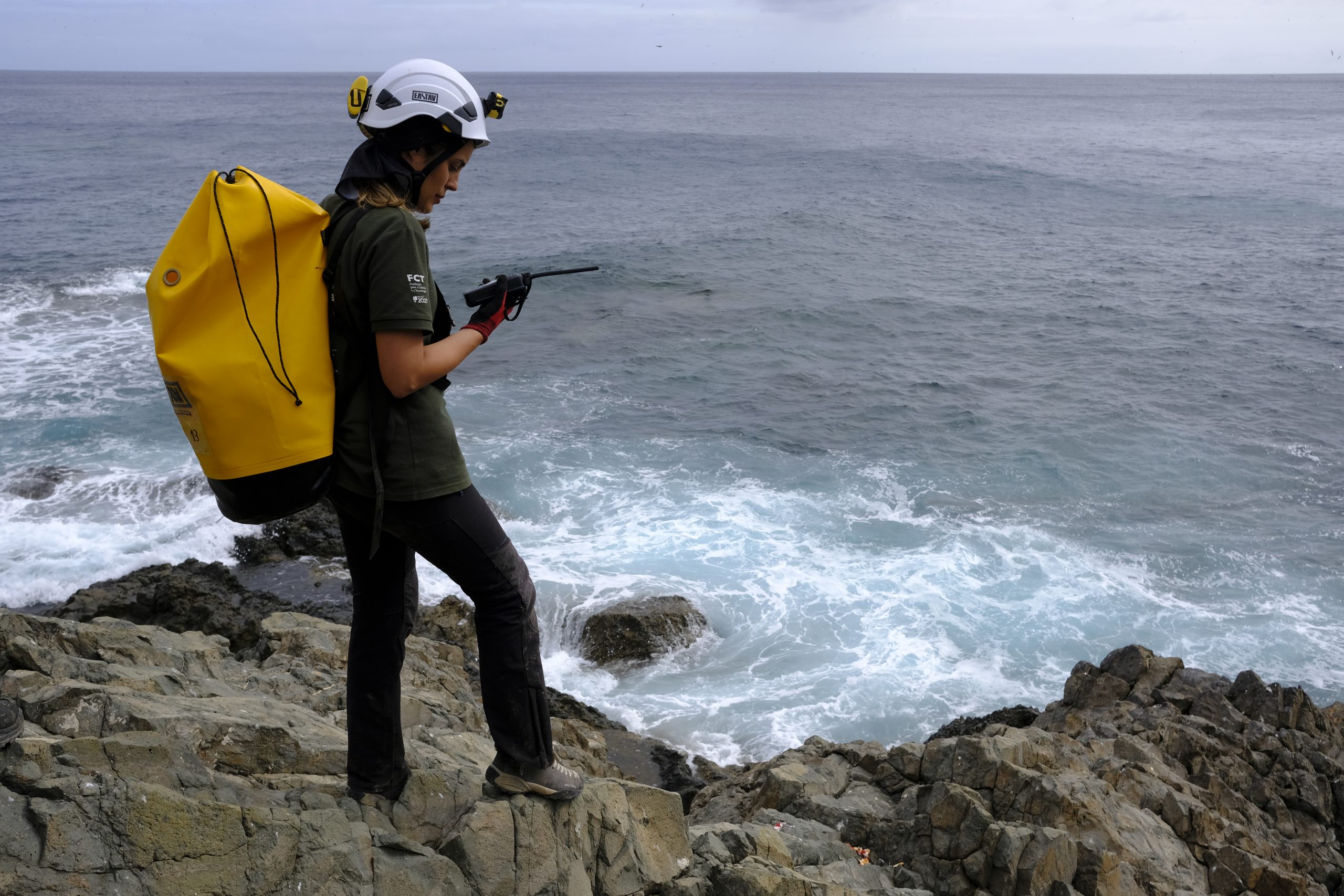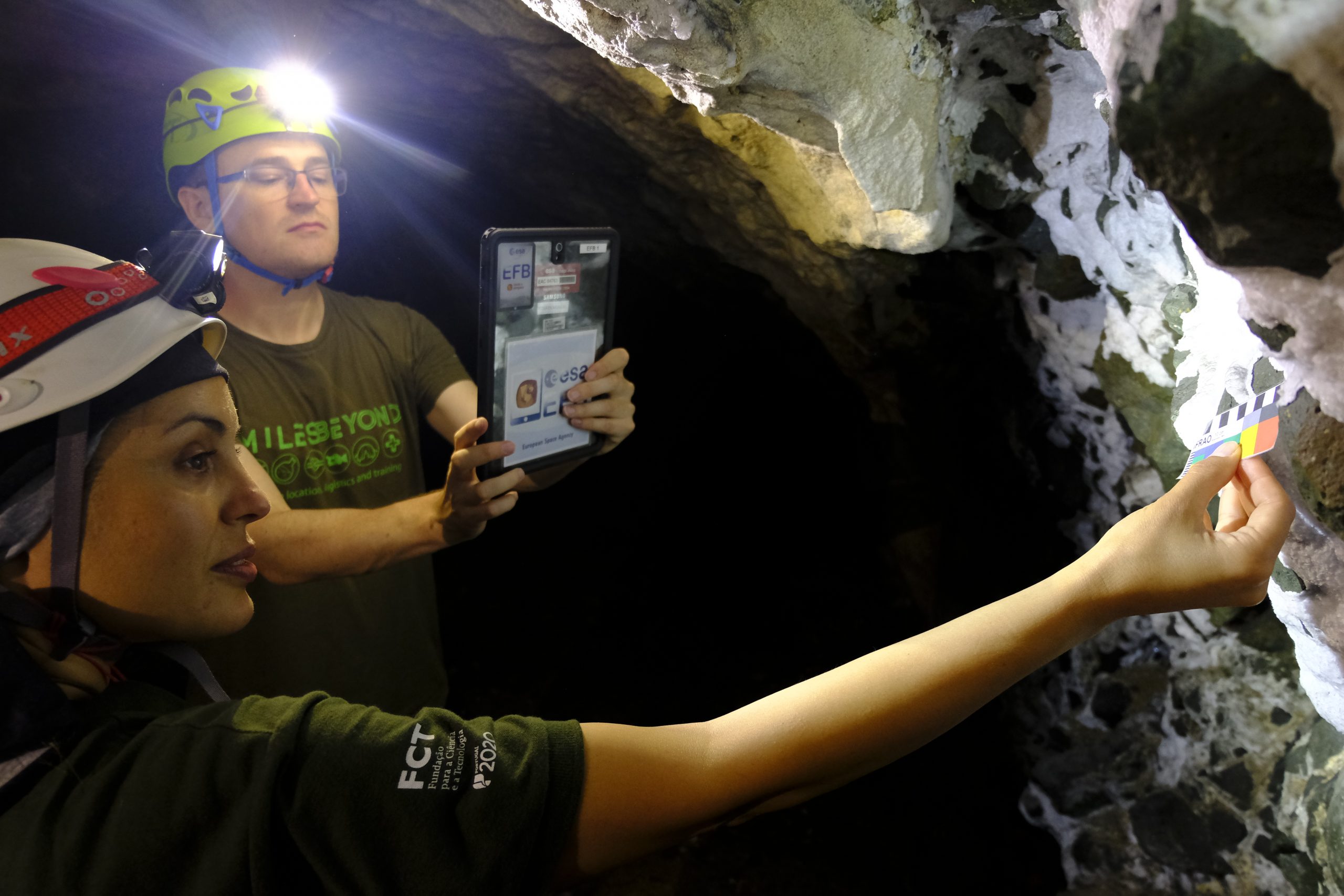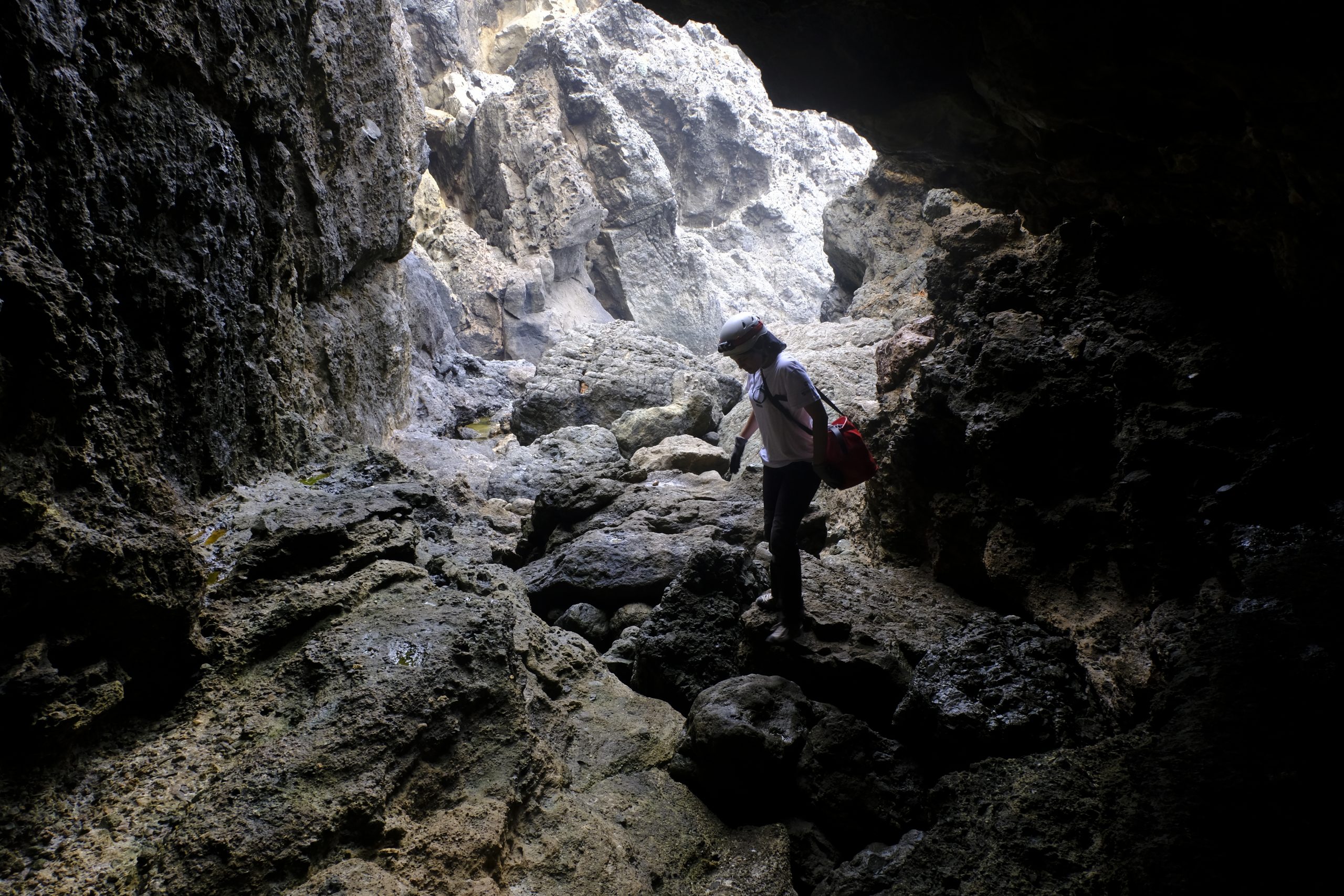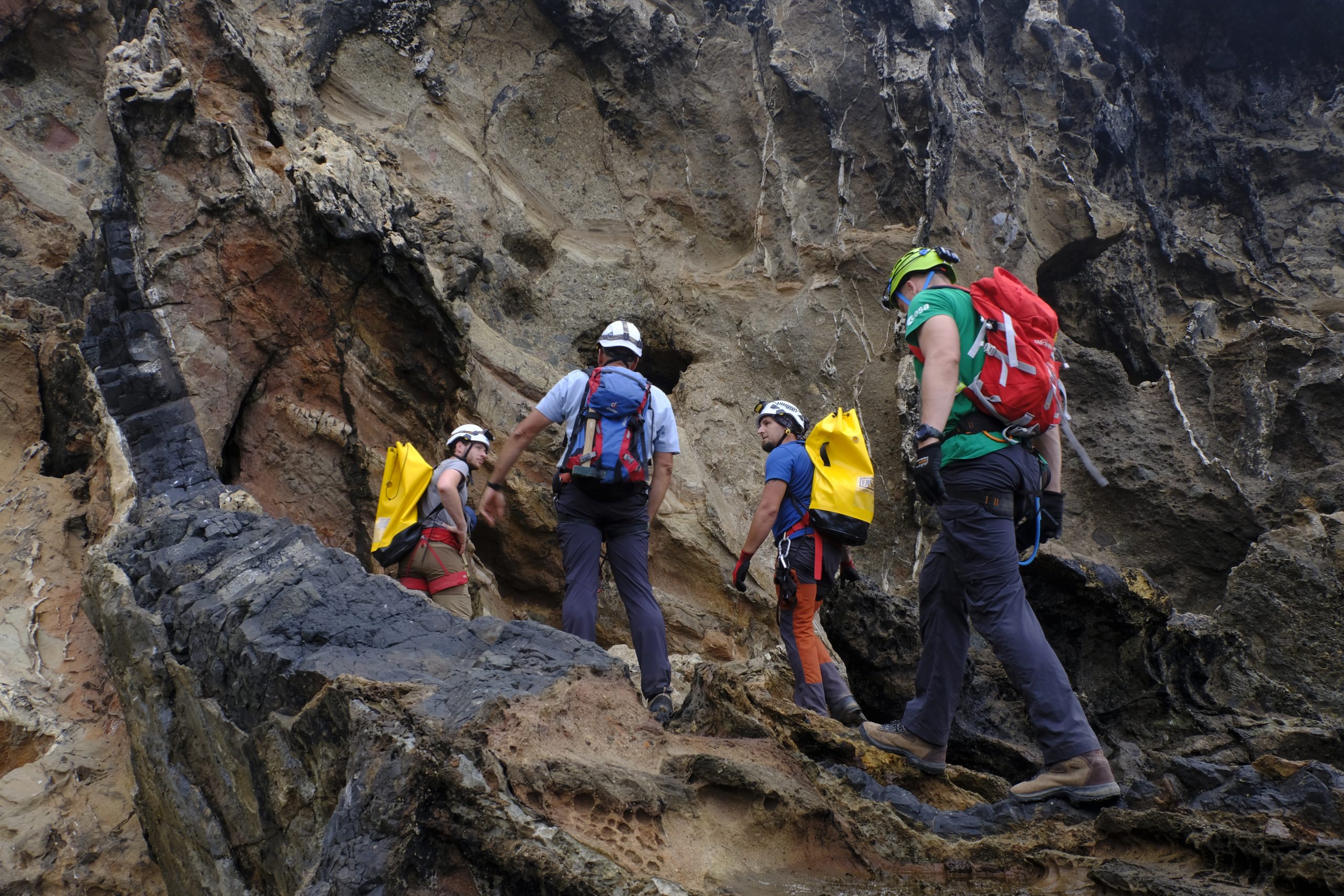Caves in the Savage Isles may contain
clues to life on Mars
The Microcene Project, led by the researcher Ana Zélia Miller, has studied the subterranean biosphere of the Selvagens Islands for the first time. With geological characteristics similar to those of Mars, the islands and their caves “can be considered as potential analogues of Mars”.
Getting to the Selvagens Islands is not easy; visiting them, even less so. You need prior authorisation to go there, whether for leisure or scientific reasons. Perhaps this is why they are “very well preserved from human influence”, both because of their isolation and their location, as Ana Zélia Miller says. And perhaps that is also why their caves tell the story of life on Earth, giving hints about Mars.
In July 2021, the microbiologist and researcher from the University of Évora led the Microcene project, funded by the Foundation for Science and Technology (FCT – Fundação para a Ciência e Tecnologia), which aimed to study, for the first time, the microbiology and mineralogy of the islands’ terrestrial and marine volcanic caves. Half a century earlier, in 1971, the Selvagens came under the territorial administration of the Autonomous Region of Madeira. In the same year, they became the first national reserve and the Institute of Forests and Nature Conservation, IP-RAM, is responsible for its management and protection.
By exploring the Selvagens caves, which seem so inaccessible, information has been gathered that could be useful to open the way to other places beyond Earth’s orbit. The islands “can be considered as potential analogues of Mars”.

Ana Zélia Miller, the project coordinator. © António Campos / National Geographic Portugal
Not that the red planet fits entirely into the rocky islands of the Madeira archipelago, “but the exploration of caves formed in volcanic settings on Earth” may give clues about “planetary caves developed in similar terrain”, such as that of Mars or even the Moon. The “discovery of lava tubes” in both sites has sparked the scientific community’s interest in volcanic caves on our planet. These underground environments “may harbour microorganisms” with unique characteristics, “playing an important role in biogeochemical cycles and biomineralisation processes” — which, in turn, “may have important applications for astrobiology and the explanation of the origin and evolution of life on Earth”, explains Ana Zélia Miller.
Apart from the volcanic caves factor, there are other reasons to look to the Selvagens Islands as a site for analogous experiences. The “geology and location in a zone of slow tectonic plate movement” is similar to “the geological processes that occur on the red planet, where there is no continental drift”. Contributing to this comparison is “the type of volcanism, effusion rates and geochemistry” of the islands, features that are still found in the Madeira and Canary Islands, Miller adds.
Subterranean discoveries
To better study the micro-organisms that grow in these caves, an international and multidisciplinary team was formed: “The Microcene project traverses various areas of knowledge, namely geomicrobiology, biogeochemistry, astrobiology, planetary exploration, climate change and biotechnology”, according to the researcher.
Not surprisingly, 17 experts and researchers from seven countries (Portugal, Spain, Italy, England, Russia, the Netherlands and Canada) have been involved in this expedition to the Selvagens, which is an “exceptional natural laboratory”. The adventure has even caught the attention of National Geographic.

Anna Zélia Miller and Samuel Payler, from ESA. © António Campos / National Geographic Portugal
They were responsible for studying “for the first time the subterranean biosphere of these islands, still unknown to science and society”. The researcher highlights the participation of the Italian geologists Francesco Sauro and Matteo Massironi, “involved in the study of the genesis of these cavities”, of Samuel Payler, astrobiologist of the European Space Agency (ESA), and Sergei Kud-Sverchkov, cosmonaut of the Russian Space Agency (Roscomos).
The team set up camp on the island and built a laboratory there. The preliminary results “were quite promising”: “A new cave was discovered, located north of the Selvagem Grande Island, which was named Dragon’s Breath”, says the leader of the Microcene project.
In addition, “scanning electron microscope observations” and “in situ DNA analyses” have made it possible to identify, in less than 24 hours, “a wide variety of microorganisms capable of interacting with minerals”. One of these examples are the “chemolithoautotrophic bacteria”, which could be “used as models for the search for past microbial life that may have existed in the volcanic caves of Mars”.

A new cave was discovered and named “Sopro do Dragão”. © António Campos / National Geographic Portugal
In an attempt to replicate a future mission to the red planet, the team has equipped itself with “cutting-edge portable technology that could be used in future manned missions to Mars to explore volcanic caves and detect microbial life”. The access to the Selvagens is not easy, but there were drones, a portable laser scanner “for the three-dimensional mapping” of the caves, techniques of extraction and analysis of DNA in situ, including a portable sequencer, an X-ray fluorescence equipment for the elemental characterization of the rocks and minerals”. There was also room for a portable scanning electron microscope, this being “the first time such equipment has been installed in a remote location”.
Providing clues to Mars, the caves of the Selvagens Islands are not closed in on themselves. This “one of the last intact volcanic ecosystems of the North Atlantic” may allow us to learn more about the adaptation and evolution of microbial life, so important for “almost all biological processes” on our planet. Moreover, since the origin of life cannot be separated from volcanic environments, studying these regions “may have significance for astrobiology and for future planetary explorations”.

The expedition gathered a wide range of experts from various fields. © © António Campos / National Geographic Portugal
The Portuguese Space Agency will publish a catalog of Analogous Space Sites and Infrastructures in Portugal. The interest around analogous space sites in the country is a topic that has gathered a lot of interest and therefore an in-depth exercise has started to harmonize and categorize in a consistent way potential and existing sites and facilities throughout the country.
The Portuguese Space Agency invites all interested parties to fill out the survey available here. Fill it in until June 30th.
